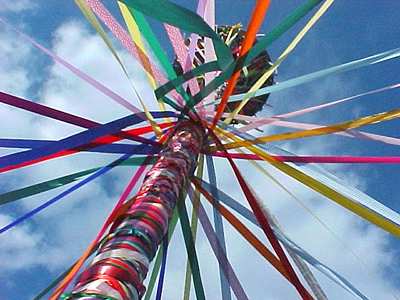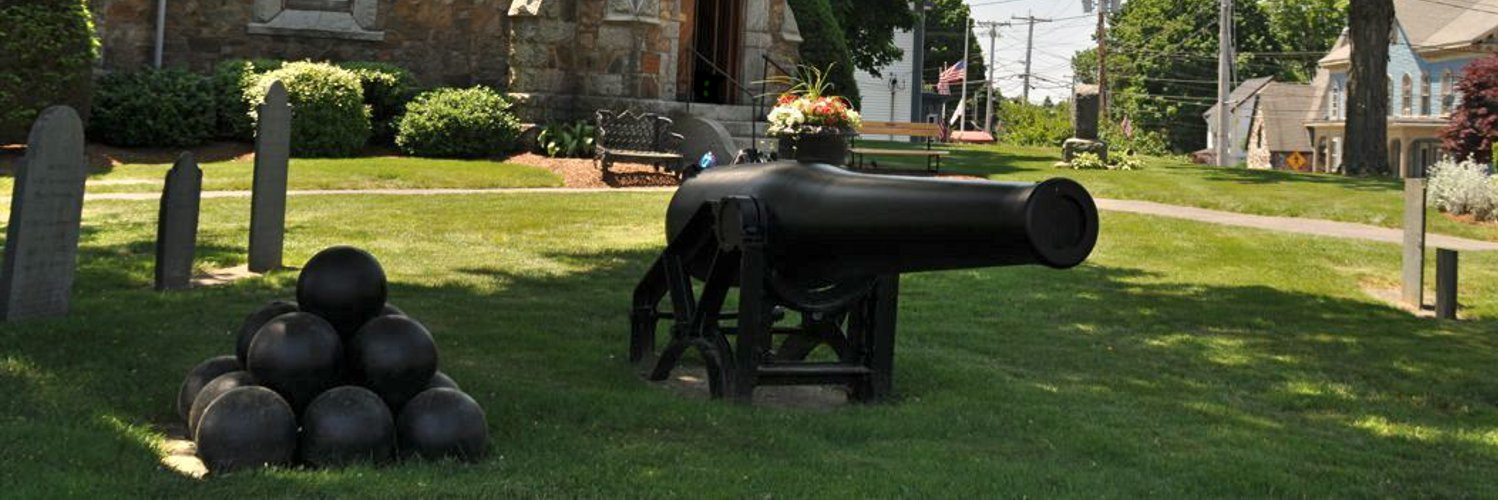The Origin, History, and Celebrations of May Day
 May Day was originally a pre-Christian observance and throughout the Northern Hemisphere the month of May was a time to celebrate renewal of life. May Day was called Beltane by the Celts, Walpurgis by the Teutons, and Floralia by the Romans. The Celts celebrated the day by dancing around a May Pole, creating garlands and bowers of flowers, and playing bagpipes and drums to traditional Morris dances; they considered this a celebration of the beginning of summer. For some cultures the May Pole represents the World Center or Tree of Life and putting a maypole up involves taking a growing tree from the forest and bringing it to your village. Wreaths and baskets of Hawthorn are sometimes used in honor of Maia, the Goddess of death and fertility, for whom May is named. Some other customs associated with May Day include “a-maying”, crowning a May Queen/King, leaving baskets of flowers by loved ones’ doors or windows, games, dancing, and jumping over a bonfire. Jumping over a bonfire was either seen as signifying an intention to marry at midsummer or interpreted as the height of the jump was how high their crops would grow. In 1644, the Puritan Parliament in England outlawed May Day and the custom of “a-maying” which involved young couples staying overnight in the forests to greet the dawn and collect flowers for the days’ festivities. With the restoration of Charles II in 1660, May Day returned and by Victorian times had transformed into a commemoration of Merri England. Despite replacement of these ancient solar May Day festivals by the Christian lunar festival of Easter as the time of renewal and rebirth, some cultures and peoples still practice the traditional pre-Christian May Day rituals and festivities.
May Day was originally a pre-Christian observance and throughout the Northern Hemisphere the month of May was a time to celebrate renewal of life. May Day was called Beltane by the Celts, Walpurgis by the Teutons, and Floralia by the Romans. The Celts celebrated the day by dancing around a May Pole, creating garlands and bowers of flowers, and playing bagpipes and drums to traditional Morris dances; they considered this a celebration of the beginning of summer. For some cultures the May Pole represents the World Center or Tree of Life and putting a maypole up involves taking a growing tree from the forest and bringing it to your village. Wreaths and baskets of Hawthorn are sometimes used in honor of Maia, the Goddess of death and fertility, for whom May is named. Some other customs associated with May Day include “a-maying”, crowning a May Queen/King, leaving baskets of flowers by loved ones’ doors or windows, games, dancing, and jumping over a bonfire. Jumping over a bonfire was either seen as signifying an intention to marry at midsummer or interpreted as the height of the jump was how high their crops would grow. In 1644, the Puritan Parliament in England outlawed May Day and the custom of “a-maying” which involved young couples staying overnight in the forests to greet the dawn and collect flowers for the days’ festivities. With the restoration of Charles II in 1660, May Day returned and by Victorian times had transformed into a commemoration of Merri England. Despite replacement of these ancient solar May Day festivals by the Christian lunar festival of Easter as the time of renewal and rebirth, some cultures and peoples still practice the traditional pre-Christian May Day rituals and festivities.
May Day is also noted as the “radical workers’ holiday” or International Workers’ Day. The first such May Day occurred on May 1, 1886, when the American Federation of Labor declared a national strike which called for eight-hour workdays and improved sanitation and safety conditions inside the workplace. At a labor rally in Chicago’s Haymarket Square someone threw a bomb which killed one policeman. Authorities subsequently rounded up eight anarchists (the “Chicago Eight”) who they believed were the leaders of the local labor movement and put them on trial for conspiracy. All were found guilty even though seven had not been present at the bomb site; four of the eight were hanged, one committed suicide in jail, and the remaining three were freed years later when public opinion turned against the questionable trial. In 1889, the Socialist International organization declared May 1 a day of demonstrations. The next May Day wasn’t observed until 1890. America’s celebrants were joined by workers in European industrial centers and in Havana, Cuba. By 1919, countries such as Canada, South Africa, China, Japan, Chile, Peru, and Korea saw young labor movements celebrating May Day. The largest turnouts were in the Soviet Union and Cuba while the US media increasingly described May Day as a “commie” event because it called for fairness and equal opportunity on the job. Large demonstrations led to employers recognizing the eight-hour day and forty-hour work week. In 1947, September’s Labor Day was already being celebrated here and the U.S. Veterans of Foreign Wars and Congress renamed May 1 “Loyalty Day” to encourage citizens to reaffirm their commitment to the country. Labor marches were still held but between the Cold War and McCarthyism, participation in May Day’s labor related events in the US dwindled while demonstrations continued, changed, and expanded globally as seen in the May Day riots in Europe and tanks and mobile missile-launchers parading before the Kremlin.
~ @02035.org
